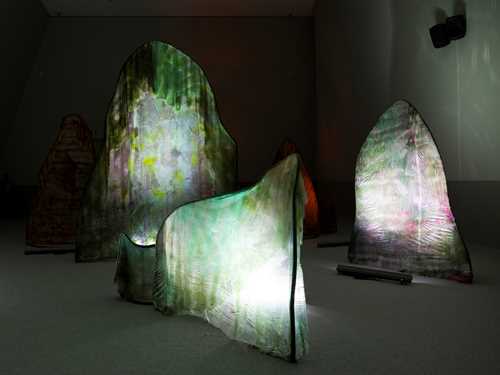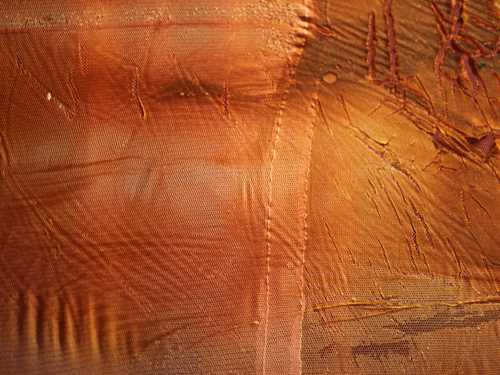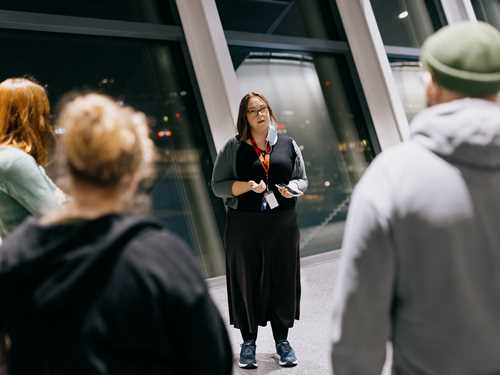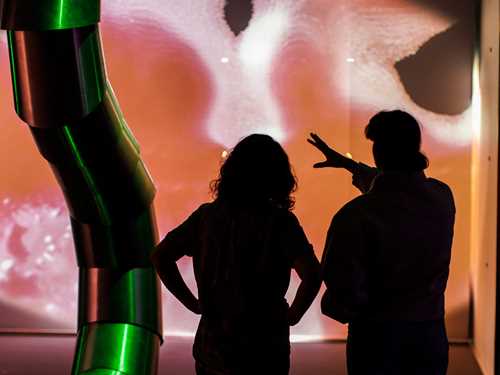How can art become more accessible for blind and visually impaired people
In SOLO OSLO II, a solo exhibition by the artist Apichaya Wanthiang, one can experience art with one’s entire body. In relation to the exhibition, mediator and art historian Frida Rusnak has worked together with people with visual impairments to find out how contemporary art can become more accessible for them. Here, she writes about her work:
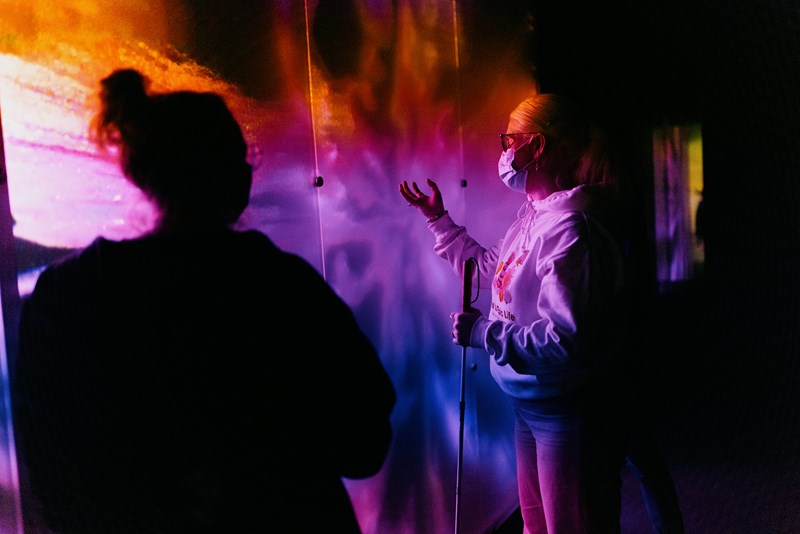
Photo: Jan Khur
Why do blind and visually impaired people want to go to an art museum? To experience something new, get new perspectives, do something social, or simply to be entertained. In other words: For the exact same reasons as other art enthusiasts.
In this project I wanted to find out what it takes for young visually impaired people to spend more time on art. I started out by asking them about their experiences and needs. Through interviews, long conversations and visits at MUNCH, I’ve come to find that there’s one point in particular that is repeated over and over again:
The museum needs to be more accessible — not the art.

Photo: Jan Khur
Unfortunately, going to a museum can often be quite exhausting. When one’s blind or visually impaired, poor facilitation means much time spent planning. It also means that more people need help to «translate» information that’s only visually accessible. This does not only apply for the actual pieces of art, but also maps, brochures, or wall texts.
To go to a museum can be challenging, even for a person with perfect vision. In fact, it is so exhausting that scientists have given the phenomenon a name of its own, museum fatigue. Museum visitors can after a short while develop symptoms such as stress, lack of concentration, restlessness, and apathy, due to overwhelming amounts of information. One often moves sideways through the room, in a staggered manner, in order to stop at every picture, squinting at microscopic name tags, and leaning backwards to read endless wall texts. These somewhat unnatural moves one makes in the exhibition space can lead to lower back pain, a stiff neck, and headaches. By making the exhibition more accessible for a small group with specific needs, I hope to make the arts experience less tiring for many more.
An important basic premise for this project is collaboration. I created a working group consisting of Nora Sulejmani, Trond-Martin Hauge, Vegard Ramstad Johannessen, Gina Skarpnord, and Harald Hardkår Vøyle, who are all members of The Norwegian Association of the Blind and Partially Sighted Youth. Their experience and knowledge has helped me identify concrete challenges, and they have suggested solutions to make the exhibition more accessible for the blind and visually impaired, in particular.
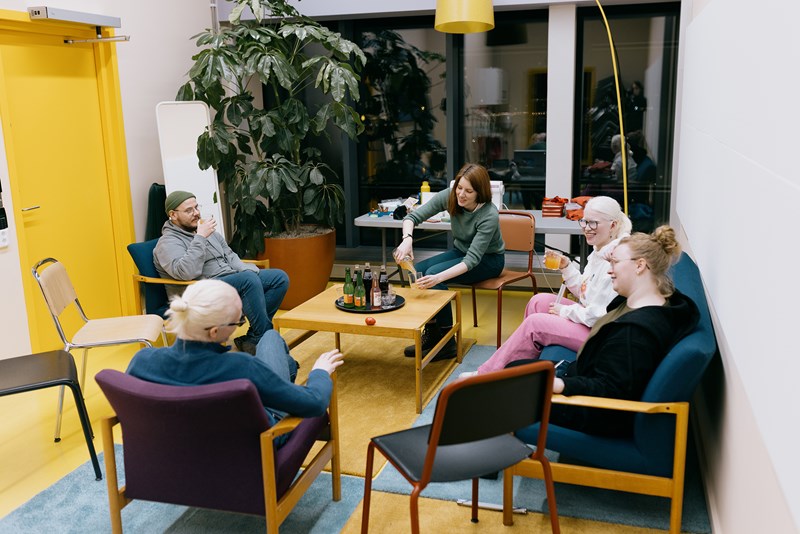
The people I have talked to in the course of this project, said it is more important to them to be able to experience an exhibition on equal footing as other visitors, than there being made special offerings for people with poor vision. Offers such as adapted guided tours usually demand booking beforehand, which again means more planning. In addition, the facilitated offering separates the people one aims to include from the other visitors. With this in mind, we decided we wanted to make it easier to visit the museum spontaneously, during regular opening hours, alone or together with friends.
The solution was to offer better information about existing barriers, and to make this information accessible for all, online. We also decided to create a tactile map to make it easier to orient oneself in the room. The group also collected a number of recommendations that MUNCH should follow up on in the future.

Photo: Jan Khur
By inviting more people into the decision making process, I wanted to take a closer look at how accessibility not only means absence of informational- and physical barriers, but also what the American curator Amanda Cachia calls creative access. This means that visitors can move safely through the room, take in all sensory impressions, and make their own interpretations. This can be anything from good descriptions of the visuals, to the sound in the room, the smell of materials, and the feeling of the ground underfoot. The point is having a chance to concentrate on the art, with all senses. As one person in our working group said:
«How might we make a museum visit as smooth as possible?»
There is a big difference between following formal requirements for universal design, which all museums should, and to invite, listen to, and include new groups in the work behind an exhibition. There are approximately 9000 blind people, and more than 300.000 who are visually impaired, in Norway, of which many have different needs and interests. It’s impossible to facilitate every experience for everyone, but museums could ask more often what it takes.
